
In Land by the Roanoke, edited by William B. Hill, the following description is given of Mecklenburg County prior to the Revolutionary War:
This was "back country," remote from Tidewater, in a day of difficult travel. Our planters lived of necessity on a simple scale. All mercantile goods had to come overland from Petersburg, some seventy miles or more away, and all tobacco had to find its way back there. Many large tracts of land had been taken up years before by great broad and fertile river low grounds, and creek bottoms as well. But the problem of the planter was to get his produce to market, and this was always to be a determining factor in the history of our economy.
A traveler who visited Mecklenburg County on the eve of the Revolution, Dr. John F. D. Smythe, wrote of the backcountry people:
A planter raises his own meats, beef and bacon, his own corn and break, his drink, cyder, and brandy, his fruit, apples, peaches etc. and great part of his clothing, which is cotton.
He has no market to repair to but the nearest store; which chiefly supplies him with finery, besides the useful and necessary articles for agriculture, and what little clothing his slaves require, for which he pays his crop of tobacco, or whatever else may be his staple produce, and is always in arrears.
The houses here are almost all of wood, covered with the same; the roof with shingles, the sides and ends with thin boards, and not always lathed and plastered within; only those of the better sort are finished in that manner, and painted on the outside. The chimneys are sometimes of brick, but more commonly of wood, coated on the inside with clay. The windows of the best sort have windows in them; the rest have none, and only wooden shutters.
Contributed 2024 Jun 23 by Norma Hass, extracted from Along the Border; a history of Virgilina, Virginia, and the surrounding area in Halifax and Mecklenburg Counties … by Harry R. Mathis, published in 1964, page 19.
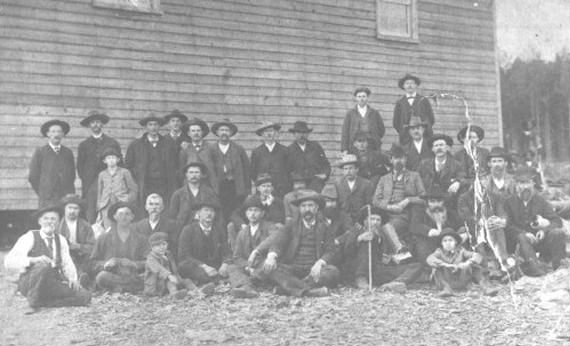 This is a photograph of the Baskerville Grange, dated 1895. It was taken
across the street from the property that is now the Dunn General Store (closed),
near the railroad tracks in Baskerville 36° 41' 20"N, 78° 16' 30"W. Later this
building burned, and Mr. C. R. Dunn bought the land and built the present brick
store.
This is a photograph of the Baskerville Grange, dated 1895. It was taken
across the street from the property that is now the Dunn General Store (closed),
near the railroad tracks in Baskerville 36° 41' 20"N, 78° 16' 30"W. Later this
building burned, and Mr. C. R. Dunn bought the land and built the present brick
store.
Mr. Watkins Crute and wife ran a boarding house, which served as a
meeting place for the "Baskerville Grange." Later Sam Land operated a store in
it.
Identifications provided by Dick Dunn.
Front Row, Sitting:
1) Watkins Crute
2) not identified
3) Charlie Gordon
5) Charles Curtis
4) Hayne Edmonson
6) Zack Curtis
7) not identified
8) not identified
9) J. W. Edmonson
10) Jim Cole
11) Mr. Crutchfield
12) Willie Crutchfield
13) John Gill
14) John Lett
Second Row:
1) a Cox boy
2) Dennis Winkler
3) not identified
4) not identified
Third Row:
1) Willie Lett
2) not identified
3) not identified
4) not identified
5) Joe Gill
6) Jimmy Simmons
7) Isiac Gill
Back Row:
1) John Crute
2) Charlie Hutcheson
3) Herbert Hutcheson
4) Conway Hutcheson
5) Charlie Farrar
6) Dabney Watson
7) Paul Tunstall
8) Charlie Bugg
9) Willie Hutcheson
10) Willie Farrar
Contributed by Leslie Coleman.
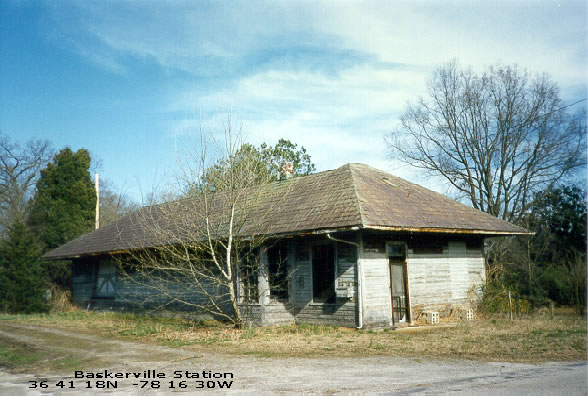
Baskerville Station
36° 41' 18"N, 78° 16' 30"W
Contributed by June B. Evans
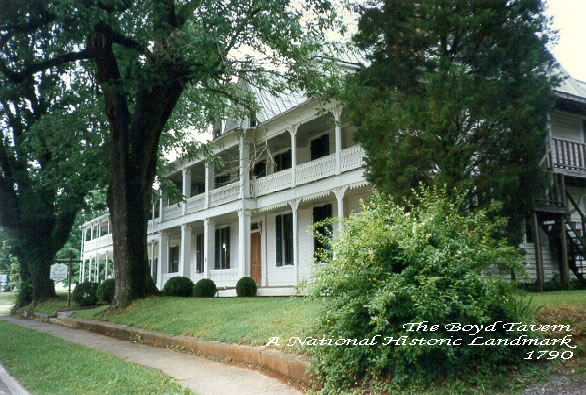
Boyd Tavern, Boydton, VA
36° 40' 03"N, 78° 23' 16"W
1870 Map, Section 10, "Boydton"
Contributed by June B. Evans
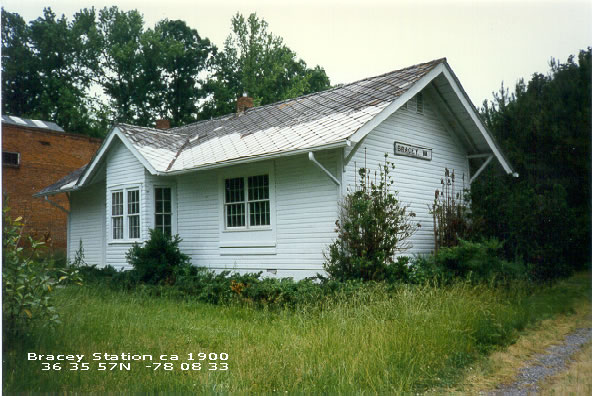
Bracey Station
36° 35' 57"N, 78° 08' 33"W
Contributed by June B. Evans
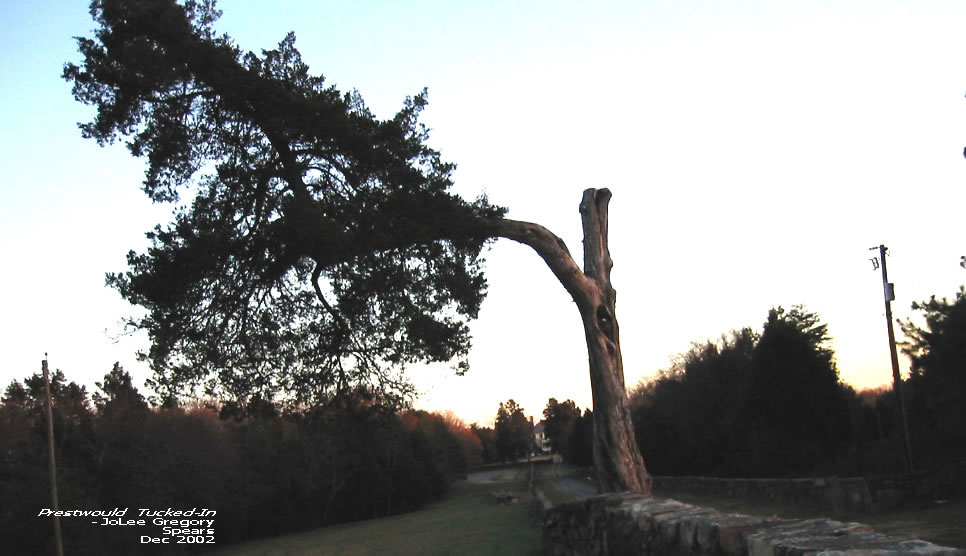
Prestwould Plantation
2003 Photo of old tree at entrance
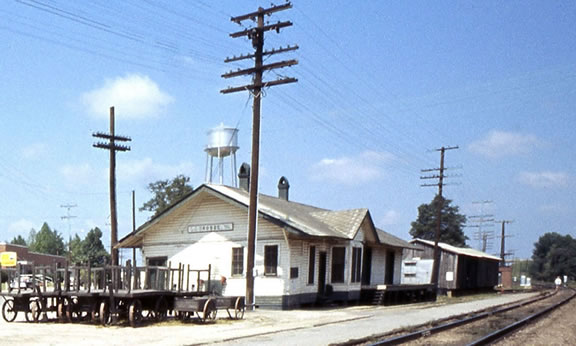
La Crosse Depot 1963
Contributed by June B. Evans
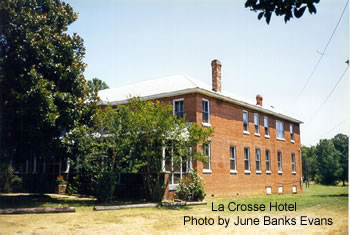
La Crosse Hotel ca 1900
36° 41' 52"N, 78° 05' 38"W
Contributed by June B. Evans
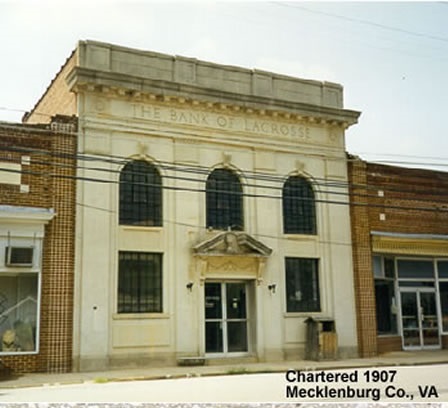
The Bank of La Crosse
36° 41' 52"N, 78° 05' 38"W
Contributed by June B. Evans
1. Kit HASKIN, Jr.
2. Wil JEFFREYS
3. Jim HARDY
4. R. C. WILKINS
5. Ned HARDY
6. __ BARNETT
7. Floyd CLARK
8. __ PRUDEN
Contributed by JoLee Gregory-Spears
Copyright © 1996 - The USGenWeb® Project, VAGenWeb, Mecklenburg County